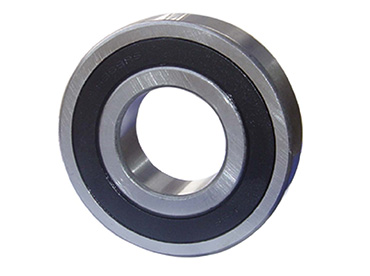In the realm of industrial machinery, the maintenance of electric motor bearing is a critical facet that directly impacts operational efficiency and longevity. We understand the pivotal role these components play in the seamless functioning of your machinery. In this comprehensive guide, we delve into the intricacies of extending the lifespan of electric motor bearings, offering invaluable insights that go beyond the ordinary.
What Are Electric Motor Bearings?
Before we delve into the strategies for enhancing the lifespan of electric motor bearings, let's establish a fundamental understanding of their role. Electric motor bearings are crucial components that facilitate smooth rotation within motors, reducing friction and ensuring optimal performance. They bear the brunt of mechanical stress and require meticulous care to prevent premature wear and tear.
Choosing the Right Bearings for Longevity
The journey to prolonged bearing life begins with a thoughtful selection process. Opt for high-quality bearings that are specifically designed for the conditions in which your machinery operates. Consider factors such as load capacity, speed ratings, and lubrication requirements. Investing in superior bearings from reputable manufacturers lays the foundation for an extended lifespan.
Lubrication: The Lifeblood of Electric Motor Bearings
Proper lubrication is paramount for the health of electric motor bearings. Inadequate or excessive lubrication can lead to friction, heat buildup, and eventual failure. Regularly inspect and replenish lubricants according to the manufacturer's recommendations. Implementing a stringent lubrication schedule ensures that bearings operate within the optimal temperature range, mitigating the risk of premature deterioration.
Temperature Management for Optimal Performance
Temperature fluctuations can significantly impact the lifespan of electric motor bearings. Monitor and control the operating temperature of your machinery to prevent overheating, which can accelerate wear and compromise bearing integrity. Utilize advanced temperature monitoring systems to promptly identify and address any deviations from the optimal range.
Preventing Contamination: A Barrier to Longevity
Contaminants such as dust, moisture, and debris pose a significant threat to the longevity of electric motor bearings. Implement robust sealing mechanisms to shield bearings from external elements. Regularly inspect and clean seals to prevent the ingress of contaminants, safeguarding the bearings against corrosion and abrasion.
Regular Inspections: Identifying Issues Before They Escalate
Proactive maintenance is key to preserving the health of electric motor bearings. Conduct regular inspections to identify potential issues before they escalate. Look for early signs of wear, misalignment, or abnormal noise during operation. Addressing minor concerns promptly can prevent major disruptions and extend the overall lifespan of the bearings.
Balancing Load Distribution: Equalizing the Stress
Uneven load distribution is a common culprit behind premature bearing failure. Optimize the alignment of shafts and bearings to ensure a uniform distribution of loads. Employ precision alignment tools and techniques to minimize stress on individual bearings, promoting balanced wear and contributing to an extended operational lifespan.
Conclusion:
In conclusion, the longevity of electric motor bearings is not an elusive goal but a tangible outcome of strategic maintenance practices. By prioritizing proper bearing selection, meticulous lubrication, temperature management, contamination prevention, regular inspections, and load distribution optimization, you can significantly extend the lifespan of your electric motor bearings.

评论
发表评论